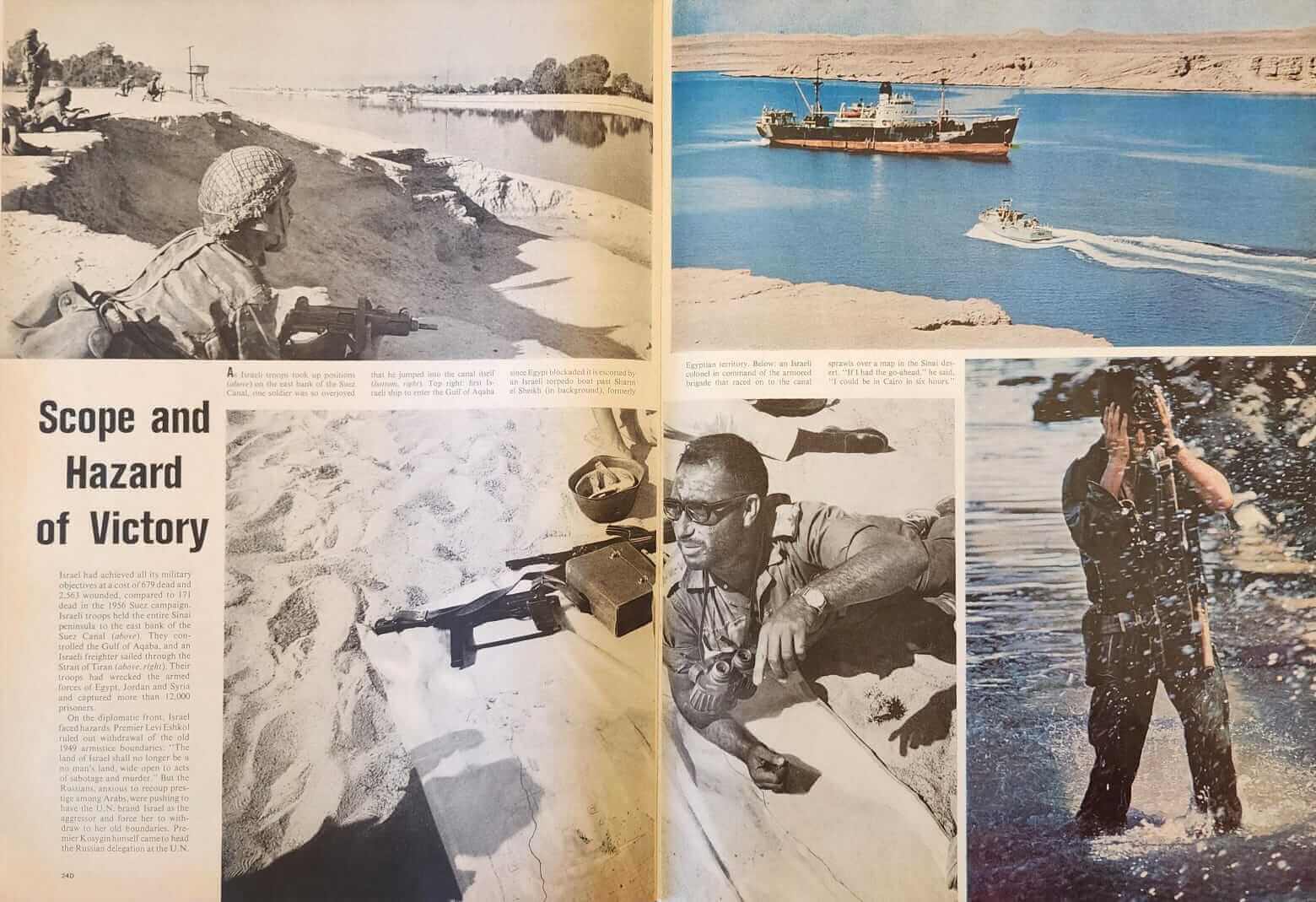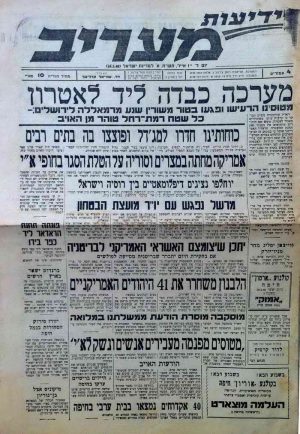Shop
Special LIFE Magazine edition ‘Israels swift victory’ Six Days War 1967
$450.00
1 in stock
Description
The Six-Day War (Hebrew: מלחמת ששת הימים, Milhemet Sheshet Ha Yamim; Arabic: النكسة, an-Naksah, “The Setback” or حرب ۱۹٦۷, Ḥarb 1967, “War of 1967”), also known as the June War, 1967 Arab–Israeli War, or Third Arab–Israeli War, was fought between June 5 and 10, 1967 by Israel and the neighboring states of Egypt (known at the time as the United Arab Republic), Jordan, and Syria. Relations between Israel and its neighbours had never fully normalised following the 1948 Arab–Israeli War. In the period leading up to June 1967, tensions became dangerously heightened. In reaction to the mobilisation of Egyptian forces along the Israeli border in the Sinai Peninsula, Israel launched a series of preemptive airstrikes against Egyptian airfields. The Egyptians were caught by surprise, and nearly the entire Egyptian air force was destroyed with few Israeli losses, giving the Israelis air superiority. Simultaneously, the Israelis launched a ground offensive into the Gaza Strip and the Sinai, which again caught the Egyptians by surprise. After some initial resistance, Egyptian leader Gamal Abdel Nasser ordered the evacuation of the Sinai. Israeli forces rushed westward in pursuit of the Egyptians, inflicted heavy losses, and conquered the Sinai. Nasser induced Syria and Jordan to begin attacks on Israel by using the initially confused situation to claim that Egypt had defeated the Israeli air strike. Israeli counterattacks resulted in the seizure of East Jerusalem as well as the West Bank from the Jordanians, while Israel’s retaliation against Syria resulted in its occupation of the Golan Heights. On June 11, a ceasefire was signed. Arab casualties were far heavier than those of Israel: fewer than a thousand Israelis had been killed compared to over 20,000 from the Arab forces. Israel’s military success was attributed to the element of surprise, an innovative and well-executed battle plan, and the poor quality and leadership of the Arab forces. Israel seized control of the Gaza Strip and the Sinai Peninsula from Egypt, the West Bank and East Jerusalem from Jordan, and the Golan Heights from Syria. Israeli morale and international prestige was greatly increased by the outcome of the war and the area under Israeli control tripled. However, the speed and ease of Israel’s victory would lead to a dangerous overconfidence within the ranks of the IDF, contributing to initial Arab successes in the subsequent 1973 Yom Kippur War. The displacement of civilian populations resulting from the war would have long-term consequences, as 300,000 Palestinians fled the West Bank and about 100,000 Syrians left the Golan to become refugees. Across the Arab world, Jewish minority communities were expelled, with refugees going to Israel or Europe. WIKI
Framed
Additional Information
| Technique | |
|---|---|
| Artist / Creator | |
| Condition | |
| Size | 34×26 cm ~ 13×10 inch |
| A |


 25th anniversary to the Zoo of Tel Aviv Vintage Israeli Poster 1963-
25th anniversary to the Zoo of Tel Aviv Vintage Israeli Poster 1963-
 064th Israeli Independence Day Vintage Poster israel 2012
064th Israeli Independence Day Vintage Poster israel 2012
 045h Israeli Independence Day Vintage Israeli Poster 1993 "Rejoice in Jerusalem"
045h Israeli Independence Day Vintage Israeli Poster 1993 "Rejoice in Jerusalem"
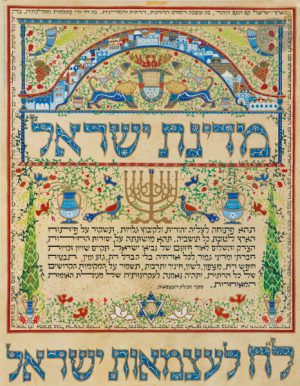 038th Israeli Independence Day Vintage Poster israel 1986
038th Israeli Independence Day Vintage Poster israel 1986
 RARE First Israeli Independence Day Blessing Poster, 1949 Shamir Brothers
RARE First Israeli Independence Day Blessing Poster, 1949 Shamir Brothers
 Vintage Israeli Poster of Gold Band Milk Margarine advertisement, Israel 1960's
Vintage Israeli Poster of Gold Band Milk Margarine advertisement, Israel 1960's
 049th Israeli Independence Day Vintage Israeli Poster 1997 The Year of Zionism
049th Israeli Independence Day Vintage Israeli Poster 1997 The Year of Zionism
 Vintage Poster "Priman" Israeli drink, drink with vitamins. Israel 1960s
Vintage Poster "Priman" Israeli drink, drink with vitamins. Israel 1960s
 Theodor Herzl (The founder of the State of Israel) Zionist Etching By Herman Struck 1920s
Theodor Herzl (The founder of the State of Israel) Zionist Etching By Herman Struck 1920s
 A Jewish Blows The Shofar Tel Aviv Tourism Poster Travel Israel Vintage Israeli 1960 Poster
A Jewish Blows The Shofar Tel Aviv Tourism Poster Travel Israel Vintage Israeli 1960 Poster
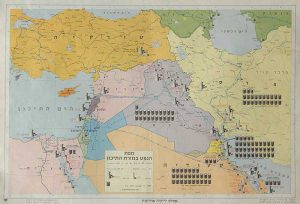 Vintage Israeli Poster Map "The Oil Prodaction Map in The Middle East" 1950s
Vintage Israeli Poster Map "The Oil Prodaction Map in The Middle East" 1950s
 42nd Israeli Independence Day Vintage poster israel 1990 (The Big Version)
42nd Israeli Independence Day Vintage poster israel 1990 (The Big Version)
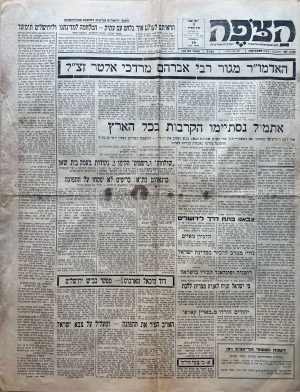 Rare Israeli Newspaper Independence War 'The Fightings are over' June 1948
Rare Israeli Newspaper Independence War 'The Fightings are over' June 1948

